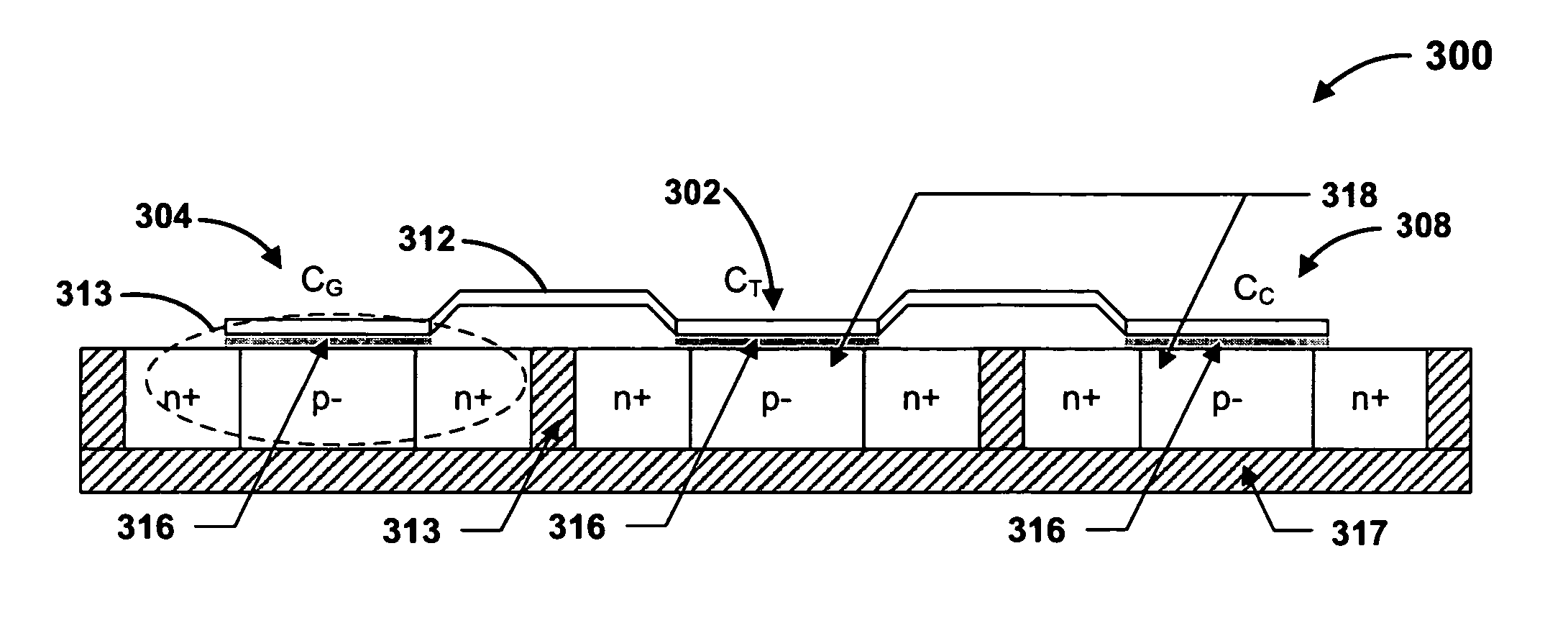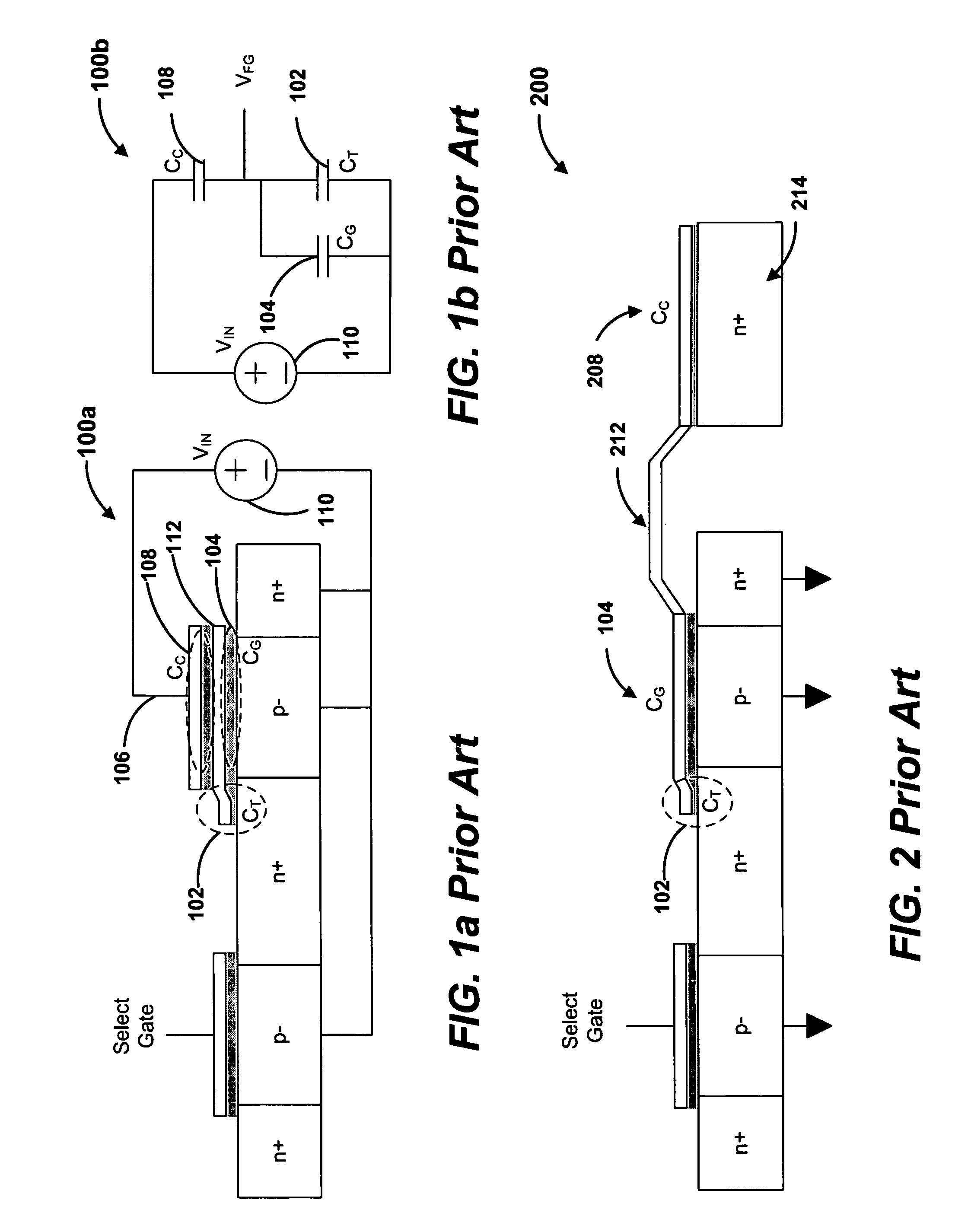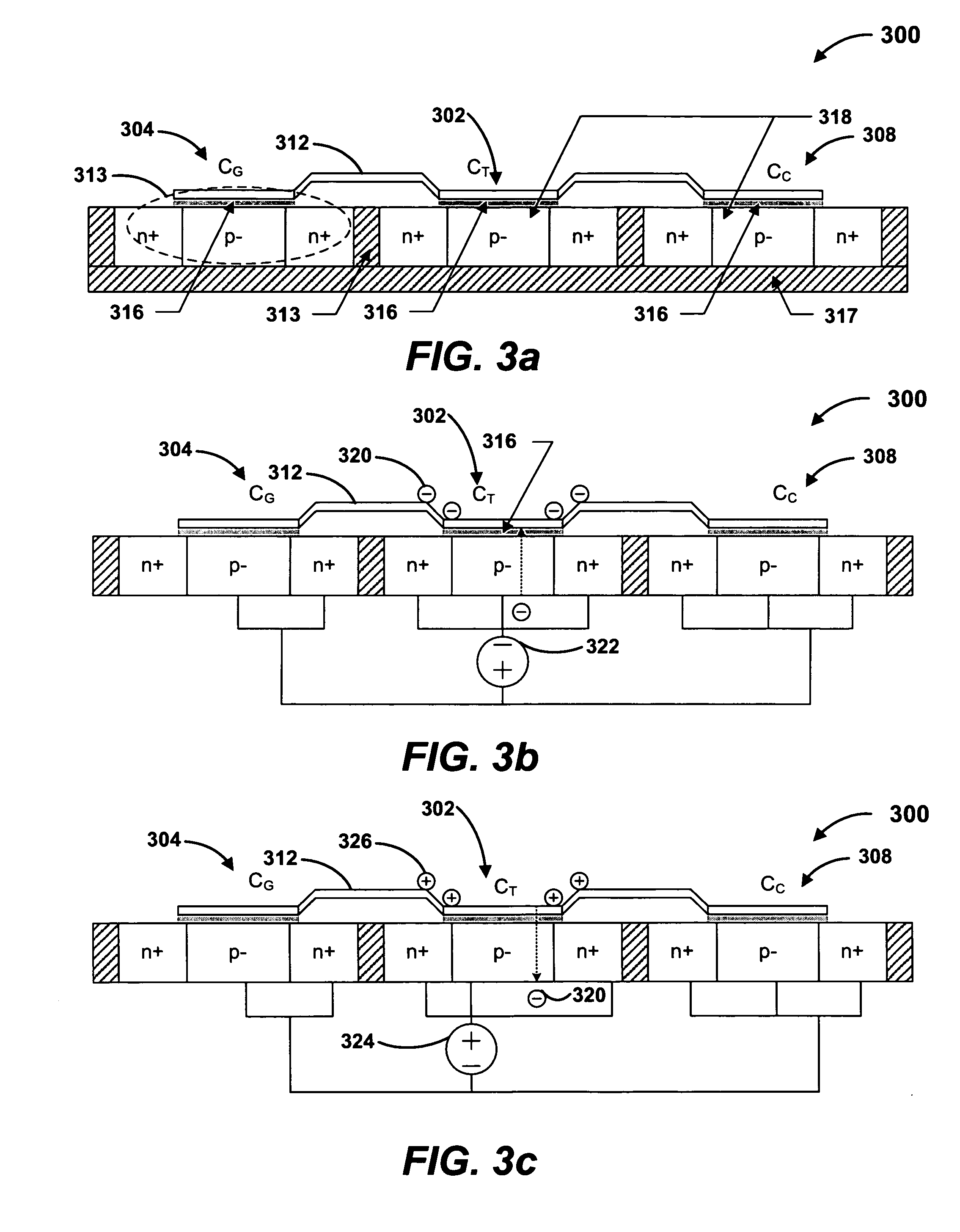Single-poly EEPROM cell with lightly doped MOS capacitors
a single-poly eeprom and capacitor technology, applied in the field of memory cells, can solve the problems of not being completely realized, control capacitor oxide cannot be easily stored on the single poly layer, and single-poly eeprom may not be completely manufactured with a standard cmos process flow, etc., to achieve the effect of reducing the need for large bias voltage, reducing damage, and altering the conduction properties of mosfet transistors
- Summary
- Abstract
- Description
- Claims
- Application Information
AI Technical Summary
Benefits of technology
Problems solved by technology
Method used
Image
Examples
Embodiment Construction
[0039] An EEPROM memory cell that is manufacturable in a standard CMOS process is presented. MOS capacitors are connected to each other via a single polysilicon line. Each capacitor has an oxide layer that is typically the thickness of the gate oxide of a FET transistor. Beneath the oxide layer is a lightly doped region. The lightly doped region may be manufactured in a standard process, such as a standard well implant, or it may even be the background doping of a semiconductor substrate. All of these processing methods, particularly when combined, allow an EEPROM cell to be created in a standard CMOS process.
[0040] One advantage of creating an EEPROM cell in a standard CMOS process is that a circuit designer can use the same semiconductor processing steps for a particular Application Specific Integrated Circuit (ASIC) and an array of EEPROM memory cells. This would allow both devices to be created side by side without altering a process flow. Altering the process flow includes add...
PUM
 Login to View More
Login to View More Abstract
Description
Claims
Application Information
 Login to View More
Login to View More - R&D
- Intellectual Property
- Life Sciences
- Materials
- Tech Scout
- Unparalleled Data Quality
- Higher Quality Content
- 60% Fewer Hallucinations
Browse by: Latest US Patents, China's latest patents, Technical Efficacy Thesaurus, Application Domain, Technology Topic, Popular Technical Reports.
© 2025 PatSnap. All rights reserved.Legal|Privacy policy|Modern Slavery Act Transparency Statement|Sitemap|About US| Contact US: help@patsnap.com



